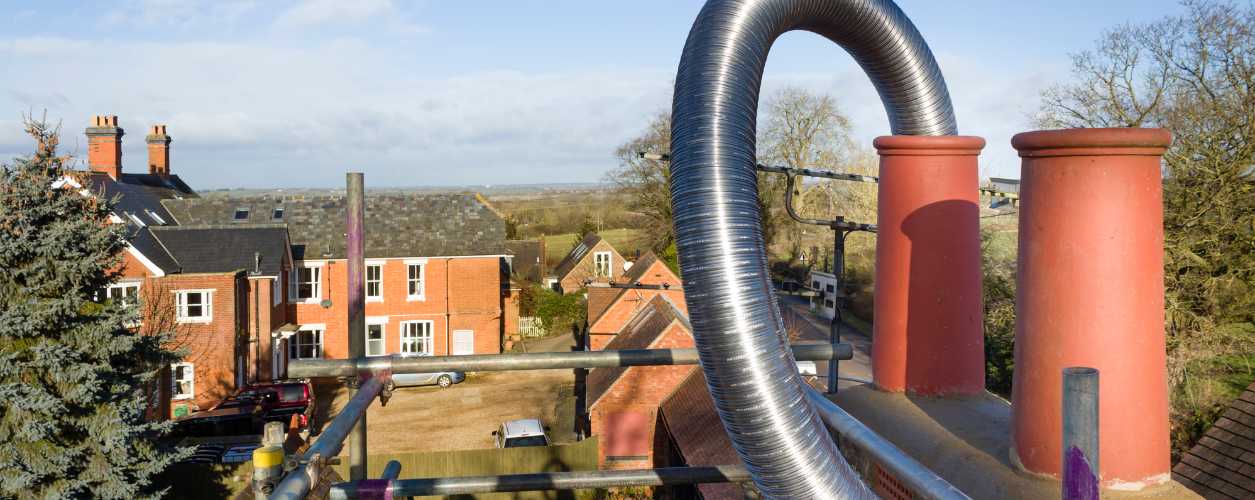The Critical Importance of a Professionally Fitted Chimney Liner
Many homeowners underestimate the role a chimney liner plays. It is an unseen but essential component of your heating system. A correctly installed, high-quality flue liner, fitted by an experienced professional, provides a host of benefits that protect both your family and your property.
Enhanced Safety for Your Peace of Mind
This is the primary reason for fitting a chimney liner. Older chimneys, particularly in period properties like terraced or semi-detached houses, can have degraded mortar joints and cracked brickwork. These faults can allow intense heat to transfer to the house's structural timbers, creating a serious fire risk. They can also allow poisonous gases, including carbon monoxide, to leak into your living spaces.
- Prevents dangerous carbon monoxide from seeping into rooms.
- Contains the heat from your fire or stove, preventing it from igniting adjacent combustible materials in the building's structure.
- Stops corrosive flue gases from attacking and weakening the chimney's masonry, preventing structural decay over time.
Improved Efficiency and Performance
A liner creates a correctly sized flue for your specific appliance, whether it's a wood burner, multi-fuel stove, or open fire. This is vital for creating the right amount of 'draw'—the upward pull that removes smoke and brings in oxygen for efficient burning.
- A warmer flue improves the chimney's draw, making it easier to light your fire and reducing the chance of smoke coming back into the room.
- You'll burn less fuel to achieve the same heat output, saving you money on logs or coal.
- A smooth, sealed flue surface prevents the rapid build-up of soot and creosote, making the chimney easier and more effective to sweep.
Signs You Need a New Chimney Liner Installation
How do you know if your chimney needs relining? While a professional inspection is the only way to be certain, there are several telltale signs that homeowners can look out for. If you notice any of the following, it is wise to seek expert advice on fitting a chimney liner.
- Debris in the Fireplace: Finding bits of mortar, flakes of clay tile, or brick dust in your hearth is a clear indication that the inside of your chimney is deteriorating.
- Damp Patches: Stains appearing on the walls of the chimney breast, either inside or outside the house, can be caused by condensation and tarry residue seeping through the porous brickwork.
-Excessive Smoke in the Room: While there can be many causes, a poorly drawing flue is a common culprit. An incorrectly sized or blocked flue struggles to pull smoke upwards efficiently.
-A Strong Tarry Smell: A persistent, acrid smell of soot or tar, even when the fire is not lit, suggests that creosote deposits have saturated the chimney structure.
-Installing a New Stove: Current building regulations (specifically Document J) mandate that a suitable flue liner is almost always required when installing a new solid fuel appliance like a wood-burning stove.
-You Have an Old Property: If your home was built before 1965 and the chimney has not been relined since, it is highly unlikely to have a liner that meets modern safety standards.
Understanding the Different Types of Chimney Flue Liners
When you get quotes for your chimney liner fitting, your tradesperson will recommend a material best suited to your property and appliance. Understanding the main types can help you have a more informed conversation.
Stainless Steel Flue Liners
This is the most common type used in the UK for relining existing chimneys. They come in two main forms:
- Flexible Liners: Perfect for chimneys with bends, which are common in older British properties. They are available in different grades—316 grade for wood and occasional smokeless fuel, and the more durable 904 grade for burning any solid fuel, including coal, over long periods.
- Rigid Twin Wall Flue Systems: Used when there is no existing masonry chimney. This insulated pipe acts as a new chimney system, running either internally through the house or up an external wall.
Clay or Ceramic Liners
These are a traditional option, offering excellent longevity. They are typically installed during the construction of a new chimney stack. Relining an existing chimney with clay sections is a more complex and labour-intensive job, often reserved for heritage projects or where specific conservation rules apply.
Cast-in-Situ or Poured Concrete Liners
This method involves inflating a special tube inside the chimney and pumping a lightweight, insulating concrete mix around it. Once set, the tube is deflated and removed, leaving a smooth, seamless, and perfectly sealed flue. It's a great solution for strengthening old or fragile chimney stacks.

